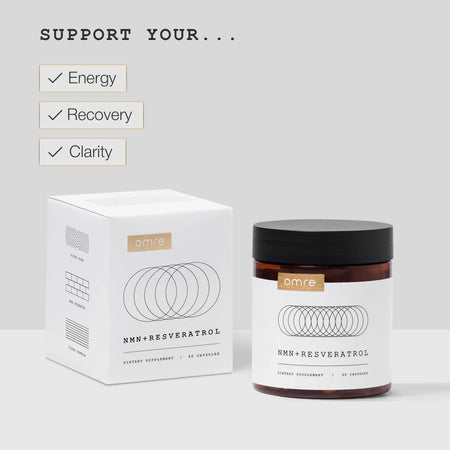Tretinoin, a derivative of vitamin A, has gained immense popularity in the skincare world, particularly for its anti-aging properties. As we age, our skin undergoes various changes, such as the appearance of fine lines, wrinkles, and uneven texture. Tretinoin is known to combat these issues effectively, making it a staple in many anti-aging regimens. In this article, we will explore how to use tretinoin for anti-aging, ensuring you get the maximum benefits from this powerful ingredient.
How to use tretinoin for anti-aging?
To use tretinoin for anti-aging, start by incorporating it into your skincare routine gradually. Begin with a low concentration, such as 0.025%, applying it once or twice a week at night. Cleanse your face and ensure it is completely dry before applying a pea-sized amount of tretinoin to your entire face, avoiding the eye area. As your skin builds tolerance, you can increase usage to every other night and eventually to nightly use. Always follow up with a moisturizer to combat possible dryness and irritation. Consistency is key, and it may take several weeks to notice significant improvements in skin texture, fine lines, and overall tone.
Understanding Tretinoin and Its Benefits
Tretinoin, also known as all-trans retinoic acid, is a topical retinoid that promotes cell turnover and stimulates collagen production. These actions are crucial for reducing the visible signs of aging, including fine lines, wrinkles, and uneven skin tone. Tretinoin also helps to unclog pores, making it beneficial for those with acne-prone skin, which often accompanies aging.
Choosing the Right Concentration
When starting with tretinoin, it’s essential to choose the right concentration for your skin type. Tretinoin comes in various strengths, typically ranging from 0.025% to 0.1%. If you have sensitive skin, it’s advisable to start with the lowest concentration. You can gradually increase the strength as your skin adapts, minimizing the risk of irritation and dryness.
Step-by-Step Guide to Using Tretinoin
Here’s a detailed step-by-step guide on how to effectively incorporate tretinoin into your skincare routine for anti-aging:
- Consult a Dermatologist: Before starting any new skincare product, especially one like tretinoin, it’s essential to consult with a dermatologist. They can assess your skin type, recommend the right concentration, and provide personalized advice.
- Start Slow: Begin with a low concentration of tretinoin and apply it once or twice a week. This approach allows your skin to build tolerance and minimizes initial irritation.
- Nighttime Application: Tretinoin should be applied at night, as it can make your skin more sensitive to sunlight. Ensure your face is clean and dry before application.
- Apply a Pea-Sized Amount: Use a small amount (about a pea-sized amount) and apply it evenly across your face, avoiding the eye area and corners of the mouth.
- Follow with Moisturizer: After the tretinoin has absorbed, apply a gentle, hydrating moisturizer to help combat dryness and irritation.
- Adjust Frequency: As your skin tolerates tretinoin, you can increase the frequency to every other night and eventually to nightly use.
- Monitor Your Skin: Pay attention to how your skin reacts. If you experience excessive redness, peeling, or irritation, reduce the frequency of application.
Common Side Effects and How to Manage Them
When using tretinoin, some individuals may experience side effects such as redness, peeling, and dryness. These effects are often temporary and can be managed with the following tips:
- Moisturize Regularly: Use a gentle, hydrating moisturizer to alleviate dryness and flakiness.
- Use Sunscreen: Tretinoin increases photosensitivity, so it’s crucial to apply broad-spectrum sunscreen during the day to protect your skin.
- Avoid Harsh Products: Steer clear of products with strong exfoliants or alcohol while using tretinoin to reduce irritation.
Results and Expectations
While many users report improvements in their skin texture, tone, and reduction in fine lines, it's important to manage expectations. Results typically take several weeks to become noticeable, often around 8 to 12 weeks of consistent use. Continued use is essential for maintaining results, as stopping tretinoin can lead to a reversal of its benefits over time.
Combining Tretinoin with Other Skincare Ingredients
To enhance the anti-aging effects of tretinoin, consider incorporating complementary skincare ingredients. For example:
- Hyaluronic Acid: This hydrating ingredient can help counteract the dryness associated with tretinoin.
- Vitamin C: Using vitamin C in the morning can provide antioxidant protection and brighten the skin.
- Peptides: Peptides can help strengthen the skin barrier and promote collagen production, complementing the effects of tretinoin.
Conclusion
Using tretinoin for anti-aging can be a transformative addition to your skincare routine. By following the steps outlined above and being mindful of your skin's needs, you can harness the power of this potent ingredient to achieve a more youthful and radiant complexion. Remember, patience and consistency are key to seeing the best results. Always consult with a dermatologist to tailor your tretinoin usage to your specific skin type and concerns. With dedication, you can effectively combat the signs of aging and enjoy healthier, more vibrant skin.
Stay Sharp, Stay Energized, Stay Ahead
Aging doesn’t have to slow you down. NMN + Resveratrol is your key to sustained energy, sharper focus, and long-term vitality. Whether you're a high performer pushing boundaries, a biohacker optimizing every aspect of life, or a parent looking to keep up with the demands of daily life, this powerful combination fuels your body at the cellular level.
Backed by science and trusted by those who refuse to settle for average aging, NMN + Resveratrol helps you stay ahead—today, tomorrow, and for years to come.
Experience the benefits for yourself. Start your journey to better aging now!
Try NMN + Resveratrol Today!
NMN + RESVERATROL
Cellular NAD+ booster with ultra‑pure NMN and Resveratrol, at research‑backed doses.*
Read more:


